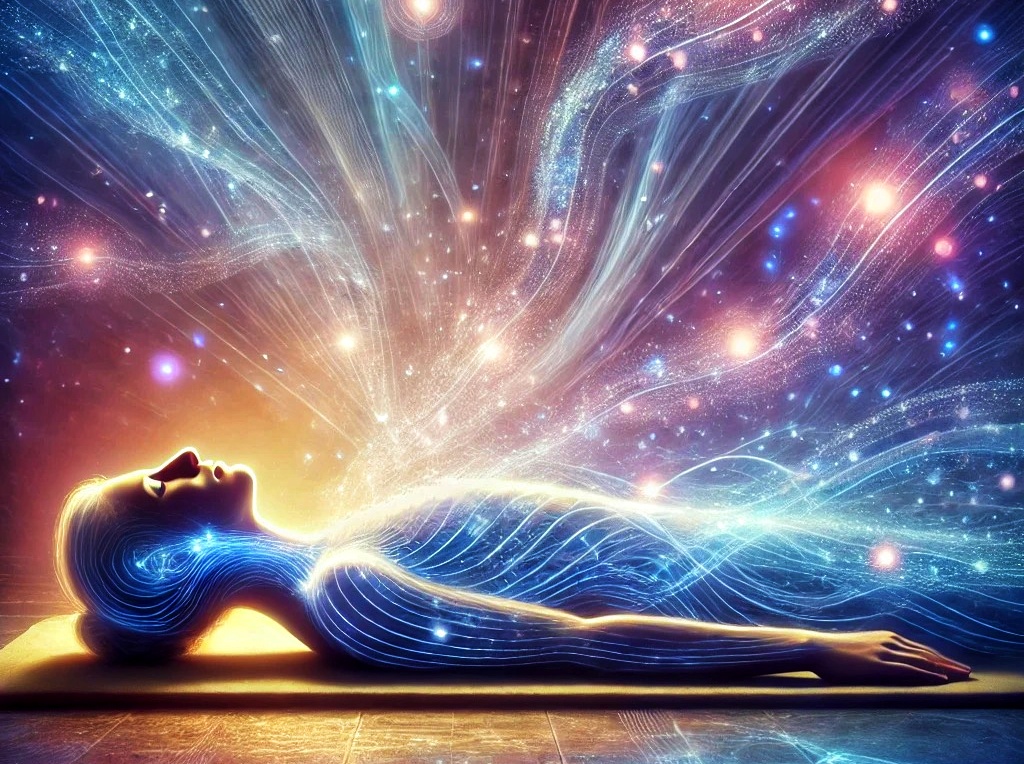Innerdance – a Deep Dive into Neurochemical Self-Regulation and Consciousness
Innerdance is far more than just a transformative experience – it is a profound process of inner exploration based on neurochemical mechanisms, musical vibrations, and the body’s natural self-regulation. In this article, we look at the origins of innerdance, its neurobiological foundations, especially the role of dopamine systems, the regulation of the autonomic nervous system, and the importance of brainwaves.
The Origins of Innerdance
Innerdance has its roots in the Philippines and was brought into the world by Pi Villaraza. Inspired by personal transformation processes and fasting on a remote island, he experienced his first innerdance. Based on this, he developed a method based on music, consciousness guidance and energetic touches. Innerdance has since evolved and integrates findings from neuroscience, music therapy and consciousness research.
Neurochemical Self-Regulation through Innerdance
Innerdance uses consciously controlled neurochemical processes to enable states of deep self-experience. Neurotransmitters such as dopamine, serotonin, acetylcholine and GABA are modulated to create a balance between activation and relaxation.
The right balance of these neurotransmitters creates a state in which the body self-regulates, releases blockages and can go through emotional processes.
The Role of Dopamine Systems and the Internal Clock
Dopamine is not only important for motivation and reward, but also influences time perception. According to the dopamine clock hypothesis, dopamine speeds up or slows down the internal clock:
More dopamine: Time passes faster, the focus is outward, consciousness is active.
Less dopamine: Time is stretched, the focus is on internal processes, introspective states arise.
Innerdance uses these natural mechanisms to consciously navigate between activation and relaxation phases and lead the body into a deep, regenerative state, a dream state.
Homeostasis – the Balance in the Body
A central aspect of innerdance is the promotion of homeostasis, i.e. inner balance. This happens on several levels:
Neurochemical balance: The conscious regulation of dopamine, serotonin and GABA allows the nervous system to harmonize.
Energetic processes: Emotional blockages can be released because the body’s own energy can flow freely.
Psychic integration: Through the deep experiences during innerdance, unconscious themes can come to the surface and be processed.
The Autonomic Nervous System and Innerdance
The autonomic nervous system (ANS) plays an essential role in the innerdance process. It controls unconscious bodily functions such as heartbeat, breathing and digestion and consists of two main branches:
Sympathetic nervous system (“fight-or-flight mode”): Is activated during stress and promotes high dopamine release.
Parasympathetic nervous system (“rest-and-digest mode”): Promotes relaxation, regeneration and emotional processing.
Innerdance uses targeted musical rhythms and frequencies to enable co-activation of these two states, allowing the body to is enabled to regain control over its own reactions in a safe space. People with heightened emotional, mental, and physical sensitivities find that it is possible to face fear or relax in the midst of fear or stress without being overwhelmed by it.
The Role of Brainwaves
Innerdance influences brainwaves in a targeted manner through a curated music selection and the natural energy flow of the body. The most important brainwave states during Innerdance are:
Beta waves (13-30 Hz): Activated state of consciousness, more at the beginning of the process.
Alpha waves (8-13 Hz): Relaxation and beginning trance states.
Theta waves (4-8 Hz): Deep access to the subconscious, emotional processing, intuitive insights.
Delta waves (0.5-4 Hz): Deepest relaxation, states similar to the deep sleep phase.
The change between these brainwaves enables dynamic access to different states of consciousness and facilitates deep transformations.
Music therefore plays a central role in the innerdance process, as it directly influences the nervous system and neurochemistry. The playlist is consciously designed to:
Regulates dopamine and serotonin by using certain frequencies.
Promotes the change between brainwaves to enable deep trance states.
Supports emotionally charged processes by using sound structures to specifically evoke emotional reactions.
Conclusion:
Innerdance is a holistic practice based on deep neurobiological mechanisms. The targeted control of dopamine, brainwaves, the autonomic nervous system and musical frequencies creates a natural healing process. It enables a profound self-experience, promotes the body’s self-regulation and can improve emotional and mental well-being in the long term.
In a world that is often characterized by stress and sensory overload, innerdance offers a unique access to deep relaxation, inner clarity and neurochemical balance. It is a journey into a cosmic consciousness, guided by music, rhythm and the natural intelligence of the body.

